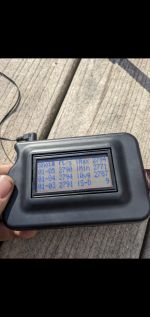I have a 223 rem, 24” proof barrel.
Just picked up some virgin starline brass to start loading for it.
Hornady auto charge pro (set on low), Hornady 75eldm, varget, cci small rifle primers. Rock chucker supreme, priming on press. Rcbs match master seating die.
Setting charge any where from 24.3-24.7 grains, 1.960 cbto for loaded round (well off lands).
I am inspecting virgin brass for deformities, and just loading it
ES is in the 80s. What is going on?
I do have a short chamber, it’s cut to nominal spec. 1.460” on fire formed brass on Hornady comparator
Just picked up some virgin starline brass to start loading for it.
Hornady auto charge pro (set on low), Hornady 75eldm, varget, cci small rifle primers. Rock chucker supreme, priming on press. Rcbs match master seating die.
Setting charge any where from 24.3-24.7 grains, 1.960 cbto for loaded round (well off lands).
I am inspecting virgin brass for deformities, and just loading it
ES is in the 80s. What is going on?
I do have a short chamber, it’s cut to nominal spec. 1.460” on fire formed brass on Hornady comparator


